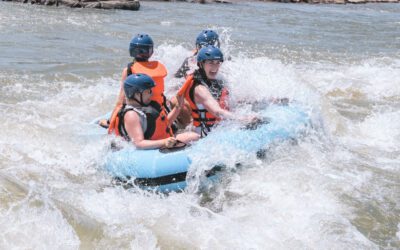When De Beers contracted N.W. Ayer & Son to create a tagline for their diamond ad campaign in 1947, four words became the single greatest advertising slogan ever created—A Diamond is Forever. As much as it conveyed the eternal meaning and significance of a diamond, it also served to make diamonds more accessible to the masses—without diminishing the aspirational qualities of owning them or the romanticism of giving them.
Historically, however, the mining of these beautiful stones has not been quite as romantic. In 1991, Sierra Leone began funding the feuds of their civil war with illicit diamond sales that eventually led to the term “blood diamonds” being coined. But not all diamonds come from war-torn countries. In fact, the U.S. has its very own active mine in Arkansas, just outside of Murfreesboro—one with a unique story to tell.
Prior to its discovery in 1889, a large expanse of “unusual green dirt” situated about two miles south of Murfreesboro was the cause of enough speculation that geologists eventually decided to examine the soil. What they found was that it bore distinct similarities to diamond-bearing volcanic material called peridotite in Kimberly, South Africa. Unfortunately, they failed to uncover any actual diamonds—which left the land to be considered nothing more than an oddity.
That all changed in 1906 when John Wesley Huddleston, a local farmer, purchased 160 acres of land near Murfreesboro. Consequently, the land included part of the expanse of volcanic material. Unlike the geologists who had examined the soil only years before, Huddleston inadvertently discovered diamonds on the property. Accidental though his discovery was, he saw the potential for riches, and Arkansas’ so-called “Diamond King” soon sold his land to a commercial mining company for $36,000.
In its very own version of the Gold Rush, Arkansas experienced a diamond rush when word got out about diamonds on the land. According to reports, the Conway Hotel in Murfreesboro turned away more than 10,000 people in a single year due to the lack of availability. As a result, a tent city was established halfway between Murfreesboro and the mine, providing the influx of diamond hopefuls a place to lay their heads and set up camp.
Over the next forty or so years, the land operated as a commercial diamond mine until 1952, when it became a privately operated tourist attraction. In 1971, the Arkansas State Parks, Recreation and Travel Commission voted to buy the property from its owner, General Earth Minerals, and maintain the property as a tourist attraction rather than a commercial mine—a decision driven primarily by a diamond yield too poor for commercial operation.
Covering 911 acres of heavily forested land, Crater of Diamonds State Park comprises a diamond search area of 37.5 acres. In addition to the mining area, the park operates a visitor center museum where guests will find displays on the history and geology of the state park as well as real, uncut diamonds and interactive exhibits. As one can see from the diamonds on display, the colors of the stones found at the park include white, brown, and yellow. “It’s a great way to understand how everything came to be, as guests can watch a video on the formation of the crater and see real diamonds on display,” says Sarah Reap, Park Interpreter II.
In the Diamond Discovery Center, visitors are given the opportunity to study displays on rock and mineral identification and are provided with more information about the geology of the park. While the park does not employ an on-site gemologist or geologist, all park staff are trained to identify diamonds and other rocks and minerals from the Crater of Diamonds search area.
“Visiting Crater of Diamonds is an incredibly unique experience as it is one of the only places in the world where the public can search for diamonds in their original volcanic source and keep any they find,” says Sarah.
In fact, there are no regulations on how many diamonds can be mined by visitors each year. According to Sarah, as of January 31, 2024, a total of 36,115 diamonds have been registered at the park in the fifty-two years since it became an Arkansas State Park in 1972. Size is also unregulated, with the largest diamond found by a park visitor being the 16.37-carat Amarillo Starlight diamond, discovered in 1975 by a man from Amarillo, Texas. However, the largest diamond ever found at Crater of Diamonds State Park was much more sizeable and weighed in at 40.23 carats. Named the Uncle Sam diamond, it was discovered in 1924 by a worker at the Arkansas Diamond Corporation, which operated the Prairie Creek pipe mine, now occupied by the state park.
As exciting as the prospect of diamonds are, the carbon-created gemstone is hardly the only thing of interest to be found on the land. Jasper, amethyst, quartz, garnet, spinel, and peridot are among the other rocks and minerals guests can find in the designated search area.
The cost for entering the search area is $15 for visitors 13 and older, $7 for children ages 6 through 12 and free for children under the age of 6. For anyone planning a trip to Crater of Diamonds, Sarah encourages doing your homework, both on the park’s website as well as from other reputable sources. “I would learn about diamond searching methods and make sure I had everything I needed, equipment-wise,” she says. “The park has mining equipment available to rent, but during busier times like summer and school breaks, we can run out quickly. I would investigate the possibilities of bringing my own.”
As for how best to enjoy a fun, safe and accident-free visit to Crater of Diamonds, Sarah says, “We recommend checking the weather before visiting and dress suitably for being outside for a number of hours. During the summer, the state park can reach temperatures upwards of 100 degrees with very few shaded areas. To preserve the natural geology and enhance the chances of finding diamonds, the park’s diamond search area may be unlevel and rough to walk over, so we always advise caution while traversing the terrain to prevent falls.”
Other amenities of the park include walking trails and picnic sites as well as forty-seven Class AAA campsites, five walk-in tent sites, a gift shop, and the seasonally operated Diamond Springs Water Park.
Crater of Diamonds State Park is located at 209 State Park Road, Murfreesboro, Arkansas.
For more information, visit arkansasstateparks.com or call 870.285.3113.




